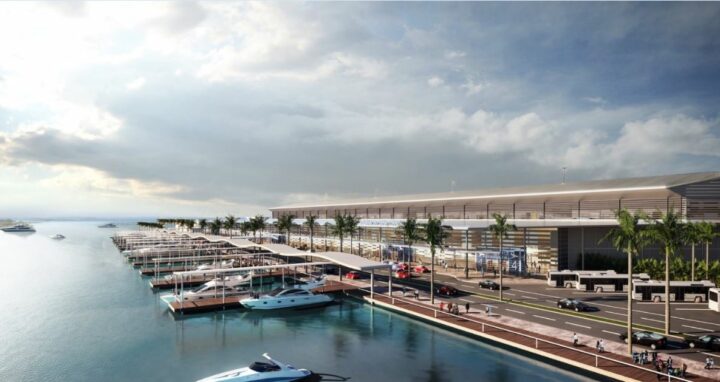
Airports – the arterial network of the Maldivian economy
[vc_row][vc_column][vc_column_text]
The Context
The Maldives – an idyllic coral archipelago which has become a popular tourist hideaway is in many respects small and beautiful.
Given the geography and that it constitutes several hundred very small islands stretching for nearly 900 kilometres in the Indian Ocean, most of which; in fact over 99 percent of which is sea, makes transportation in the island nation a daunting task. In order to provide some perspective, it is perhaps prudent to consider the key forms of transport available in the Maldives. To traverse the Maldives from top to bottom – with a Dhoni will take over 46 hours! To travel by a speedboat it would take over 15 hours and even to travel by floatplane it would take nearly 4 hours.
The Maldivian economy is primarily based on Tourism which accounts for nearly 30 percent of the national GNP and has an indirect impact on nearly 85 percent of the national economy. The pace of tourism development is steady and to serve over a million and a half tourists arrivals the country offers 616 tourist accommodations, ranging from upmarket resorts to hotels, to guesthouses to safari vessels. The bed capacity is just over 34,000.
The Network
The main international gateway by air to the Maldives is Velana International Airport located on the island of Hulhulé in the proximity of the capital Malé, which is about a third from the northern tip of the country. In addition, down in the south Gan serves as an international airport and at times Hanimaadhoo in Haa Dhaalu Atoll has served or may serve some international flights.[/vc_column_text][/vc_column][/vc_row][vc_row][vc_column width=”1/2″][vc_single_image image=”3800″ img_size=”full” onclick=”link_image”][/vc_column][vc_column width=”1/2″][vc_column_text]The current network of airports include a dozen operational land aerodromes and half a dozen planned land aerodromes which would cover 16 of the 20 atolls of the Maldives. However, there is also another significant element of the aerodrome network of over 87 Floating Platforms served by the Floatplane operations.[/vc_column_text][/vc_column][/vc_row][vc_row][vc_column][vc_column_text]Whilst this network continues to serve the industry, and as the growth continues; it is reasonable that this will trigger further expansion of the network itself. Nevertheless, it is clear that there exist some bottlenecks in the network which are being addressed.
The Considerations
The key consideration is the fact that the Maldivian economy largely dependent on tourism have to cater to over a million and a half tourists who come in on international flights at all times of the day and most do not have or even enjoy travel on the sea – sometimes quite rough; and they would prefer to get to their resort in the shortest possible timeframe.
In addition to the total number of tourists, the other important factor that needs consideration is that a significant number of the tourists are coming to the premium resorts in the country. For these tourists who are already paying a premium for their stay and having enjoyed business class travel to the Maldives or arrived on a private jet, it would be natural to travel to their destination by air-taxi.[/vc_column_text][/vc_column][/vc_row][vc_row][vc_column width=”1/2″][vc_column_text]Velana International currently serves most wide-bodied aircraft in operation. However, there are three key aspects that either limit or impede the satisfactory growth and service to the current tourism industry of the Maldives. Firstly as the aircraft are all remotely parked there is inefficiency and inconvenience to the passengers to embark and disembark in all weather.[/vc_column_text][/vc_column][vc_column width=”1/2″][vc_single_image image=”16203″ img_size=”full” onclick=”link_image”][/vc_column][/vc_row][vc_row][vc_column][vc_column_text]Secondly, the terminal facility with its current size and layout and facilities is inadequate for the numbers, types and growth in passenger numbers. Thirdly, the lack of a rapid exit taxiway means that aircraft landing on the main runway are required to backtrack on the main runway itself leading to delays and additional fuel burn for those aircraft coming into land in proximity.
The Maldives tourism product also requires import of a lot of items be it food or beverages – some fresh – which require timely arrival and efficient processing to enable them to reach the resorts in time to meet the service levels they aspire to. This does mean that cargo processing at the airport also requires further development.
The Nation’s Gateway Looking Ahead
Velana International plays a pivotal role in the growing tourism industry as the nation’s air gateway. It is for this reason that expansion plans for the airport are already underway.
The new expansion plans include the construction of a new Code F Runway with a length of 3,400m and a width of 60m. This means that once the new runway is operational it would greatly improve the safety aspects by increasing the distance from the runway and apron, plus it will enable all commercial wide-bodied aircraft to land and takeoff.
Additionally, this would make the existing runway to be used as a taxiway and as an emergency runway if needed. More importantly, it would greatly improve the operational performance of the airlines serving the airport and further, reduce their operational costs by reducing the additional fuel burn that they currently incur due to time in the holding pattern as the main runway is occupied by the backtracking aircraft.
The new terminal with contact gates will ensure that passengers are able to embark and disembark in all weather in comfort and more efficiently. The expanded apron and contact gates will improve the management of the apron space and reduce any safety hazards as well. The apron will be served with fuel hydrants which would help increase operational efficiency.[/vc_column_text][/vc_column][/vc_row][vc_row][vc_column width=”1/2″][vc_single_image image=”13219″ img_size=”full” onclick=”link_image”][/vc_column][vc_column width=”1/2″][vc_column_text]The new terminal facility will provide additional facilities to premium class passengers and increase the number of airline lounges available. A new cargo complex which is part of the current development plans will facilitate the efficient and quality of the handling of the cargo coming in by air.[/vc_column_text][/vc_column][/vc_row][vc_row][vc_column][vc_column_text]These aspects and others included in the development plan will not only make Velana International a premium airport but provide the opportunity to cater to the steady growth of traffic anticipated in the coming years.
The Benefit to the Hoteliers
The planned expansion and development at Velana International Airport will not only fully address the current bottlenecks and constraints at the airport but contribute to the yield of the hoteliers. With the expansion and provision of additional facilities at the airport, the hoteliers will be able to provide a seamless premium service to their valued customers from the time that they take off from their home airport till they arrive at their resort.
Equally with the additional and improved service levels at the airport overall hoteliers will be able to further reduce their operational costs, provide produce on a timelier basis and therefore greatly improving the experience of guests.[/vc_column_text][/vc_column][/vc_row]






